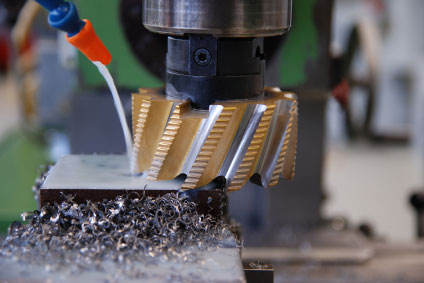When first moving into the world of CNC, many machinists simply continue to machine material the same way that they always did on manual machinery. There is nothing wrong with this; however, one of the benefits to cutting work on a CNC is the ability to achieve unattended machining. Planning for hands-off machining sometimes requires a slightly different approach to tasks than what is standard on a manual machine.
Let’s take an example of squaring a steel block on a mill. The typical process would involve flipping a block around in order to face off all six sides. An angle plate or a vise, along with a machinist’s square, will allow the block to be squared fairly quickly and accurately. This is a fairly labor-intensive process though, even if done in a CNC. There are six setups required, as well as a fair amount of measuring, which will keep you tied to the machine during the entire process.
A method that I have used successfully in the past takes a little longer to complete, but allows the machine to run unattended, thus allowing you to concentrate on other tasks. Let the machine take care of the mundane task of squaring while you work on the programming for the rest of the project.
The first thing to do is set the block on parallels in the vise so that it is clamped by 1/8″ to 3/16″. If the sides to be clamped are not parallel, take a few minutes to clean them up to allow for more even clamp pressure. We are not holding on by much here, and launching the block out of the vise can ruin your whole day. Now we can face off the top of the block, just enough to clean it up.

Next, stage any tools that are needed off the finished top, and write a program to contour around the sides of the block. We are on the outside of the block here, so use the largest cutter you have and step down in small increments to avoid any cutter deflection. Cut down to just above the vise jaws. Depending on the size of the block, you may want to add some finish passes with a sharp cutter. You now have five sides of the block square to each other, and if you programmed conservatively, the process should have only required a few glances from time to time.
To finish up, the block can be flipped over in the vise, and the back can be faced to finished size. Depending on the amount of stock to be removed, this may be all that is needed. If there is still an unfinished band remaining, the X and Y of the block can be picked up off of the finished portion and the original contour program run to a depth that will allow for cleanup. An alternate method would be to clamp the finished face against an angle plate, with one of the four finished sides resting on a parallel. An end mill can then be used to blend to the finished side. Flip the block and repeat for the remaining sides.
As I mentioned, this is not the quickest way to square a block, but even if it takes 50% longer, you still come out ahead by having the opportunity to do other things while the squaring takes place. If you are able to write a program with variables, there will be a minimum of programming required for different-size blocks, which will help to streamline the process. You won’t want to use this procedure in every case, but there are times when it will make you glad to have a CNC!
Please do us a tremendous favor and forward this e-mail on to your machining friends!
Are you not a subscriber to DIGITAL MACHINIST? Visit us at www.digitalmachinist.net and request a no-obligation issue, or call and request it at 1-800-447-7367. Tell them you received an e-mail from a friend!
And don’t forget to check out Digital Machinist’s page on Facebook and our Twitter feed!
Your friend thinks you’ll enjoy DM, or you wouldn’t have this e-mail!
We hope you enjoyed this e-mail tip, brought to you by your friends at Digital Machinist.
Get Involved!
Do you enjoy our e-mail tips? Has one of them ever “knocked something loose” in your head? Your tip could be a future e-mail blast from your favorite magazine. Just send your tips to george.bulliss@VPDemandCreation.com. If we use your tip, we will extend your subscription by an issue. We like to see 200 to 300 words, plus an image, if available. Thanks!
We hope you enjoyed this e-mail tip, brought to you by your friends at Digital Machinist, dedicated to precision metalworking.
